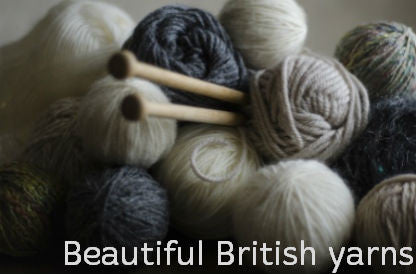
Why the recycling of yarns is good for our environment and reducing man-made impact on climate change.
A 2021 report from the World Economic Forum identified fashion, and its supply chain, as the planet's third largest polluter (after food and construction) United Nations Comate Change News states, "the fashion industry contributes around 10% of global greenhouse gas emissions due to its long supply chains and energy intensive production; more than all international flights and maritime shipping combined".
Worldwide there is approximately 92 million tons of used clothing thrown away every year which is expected to grow to 130 million tons by 2030. This will require an enormous amount of precious and scarce land to accommodate such vast amounts of textile waste. By recycling textile waste to produce good quality yarns, Kremke are providing a solution to address this ever-growing problem from such discarded used garments.
Recycling helps save valuable resources.
Recycling garments is an entirely mechanical process without the use of dyes, chemicals and using very little water. By recycling such discarded post-consumer textile, the benefits are achieved:
- Land: Valuable land is saved by removing textiles from landfill and also from the growing of virgin fibres.
- Water: There is very little need of water in production of the mechanically recycled fibres/yarns. Whereas, 1kg of premium cotton requires up to 11,000 litres of water.
- Electricity: Recycled fibres/yarn comsume a lot less energy compared to virgin fibres.
- Green house gases (GHG's): These are emitted during the production process of virgin textiles and polyester fibres. By recycling textiles, we also save on GHS emissions caused during the biodegradation of discarded textiles.
Furthermore, recycling fibres creates jobs! On a conservative estimate, producing recycled yarn requires nearly 5 times more labour as compared to virgin fibres because recycling of textiles is a highly labour intensive industry. This is because the used garments are manually sorted for quality, colour then the garments are stripped of buttons, zips and other trims, and then finally shredded into fibre and then spun into yarn.
How Kremke yarns contribute to the cycle:
In 2021 Kremke purchased approximately 10,000kg of recyled wool and denim from post consumer (worn) textiles. Estimating that a pullover or a pair of jeans weighs around 500 grams on average, this means that they have given life to some 20,000 garments!
These are the Kremke Soul Wool recycled yarns available at Wool on the Exe:
Reborn Wool: this is made from textiles that have been used before. First the
garments are sorted according to fibres in the factory. Any garment that consists of 60% or more wool would move along the wool sorting line to the 2nd stage of sorting which is by colour.
Once these colour sorted garments have been shredded in to fibre, approximately 10-15% recycled polyester (rPET) is added to it. The rPET is added to provide strength and evenness to the spun yarn. The rPET added at this stage is from 100% from polyester recycled from PET bottles.
Knitting with Reborn Wool looks and feels like a pure wool. It has a compact stitch definition and some colours display a slight tweed effect. The yarn is perfect for durable pullovers, cardigans, blankets and cushions.
Reborn Jeans: This is also a post-human fibre. It's made from used jeans and the raw material is not bleached which does limit the colour range to that found in traditional jeans.

Knitting with Reborn Jeans feels very soft, almost like a combination of wool and silk, which is achieved by adding polyester made from recycled PET bottles. The yarn is kind of drapey and heavy. Be sure to wash your tension square before measuring your gauge!



